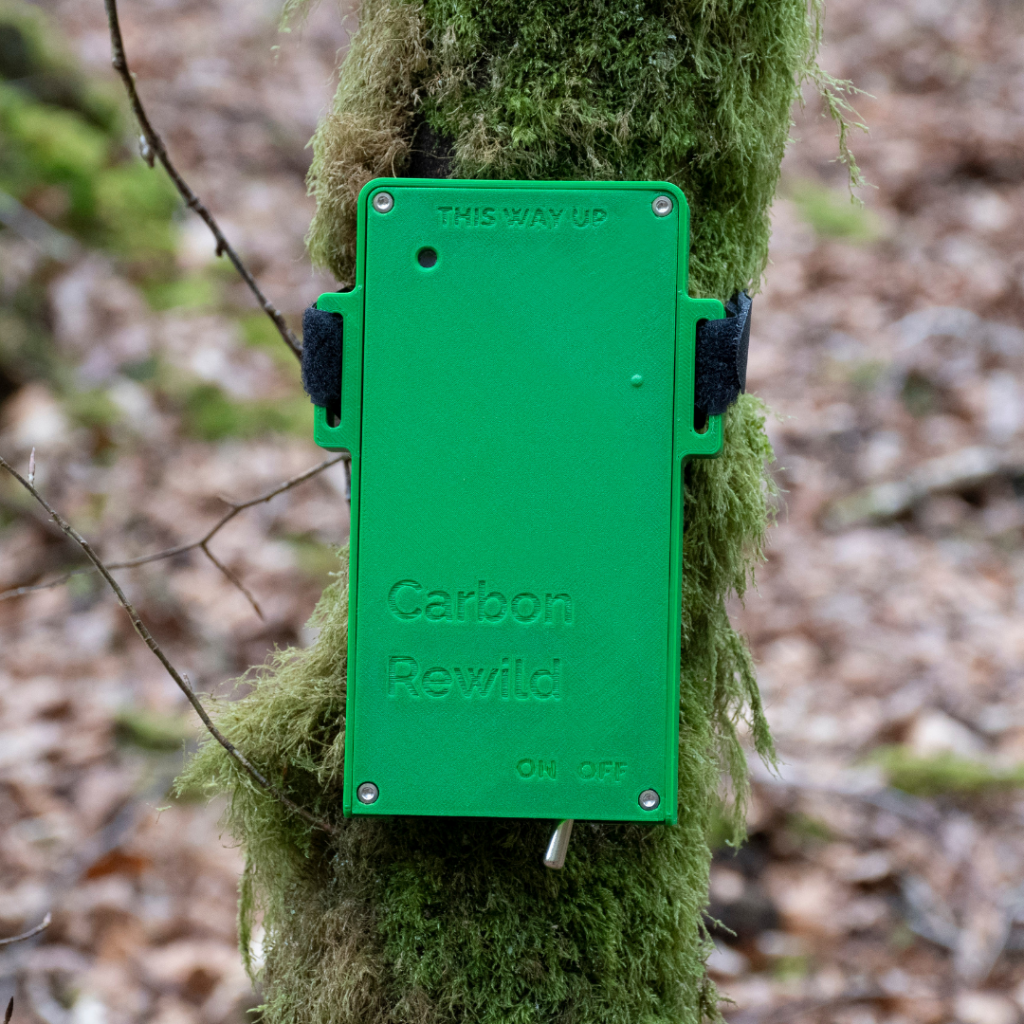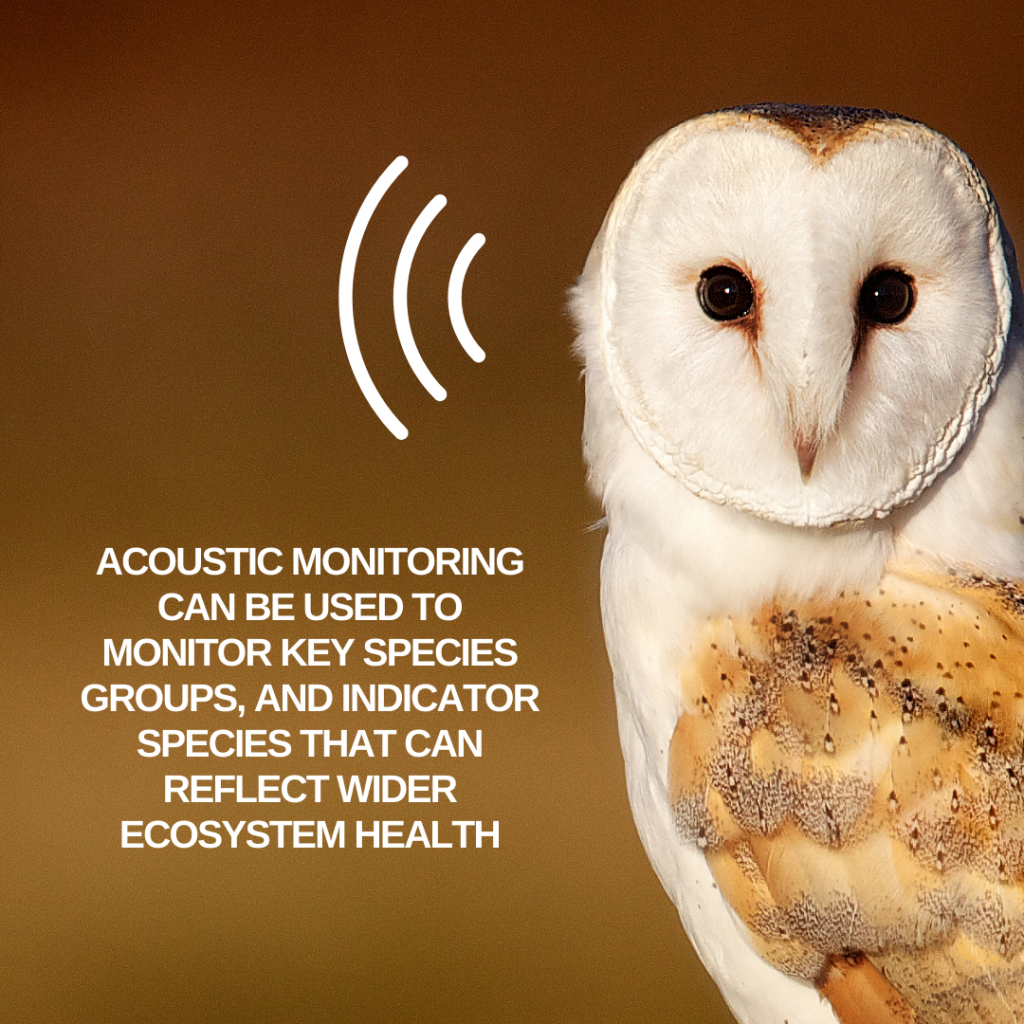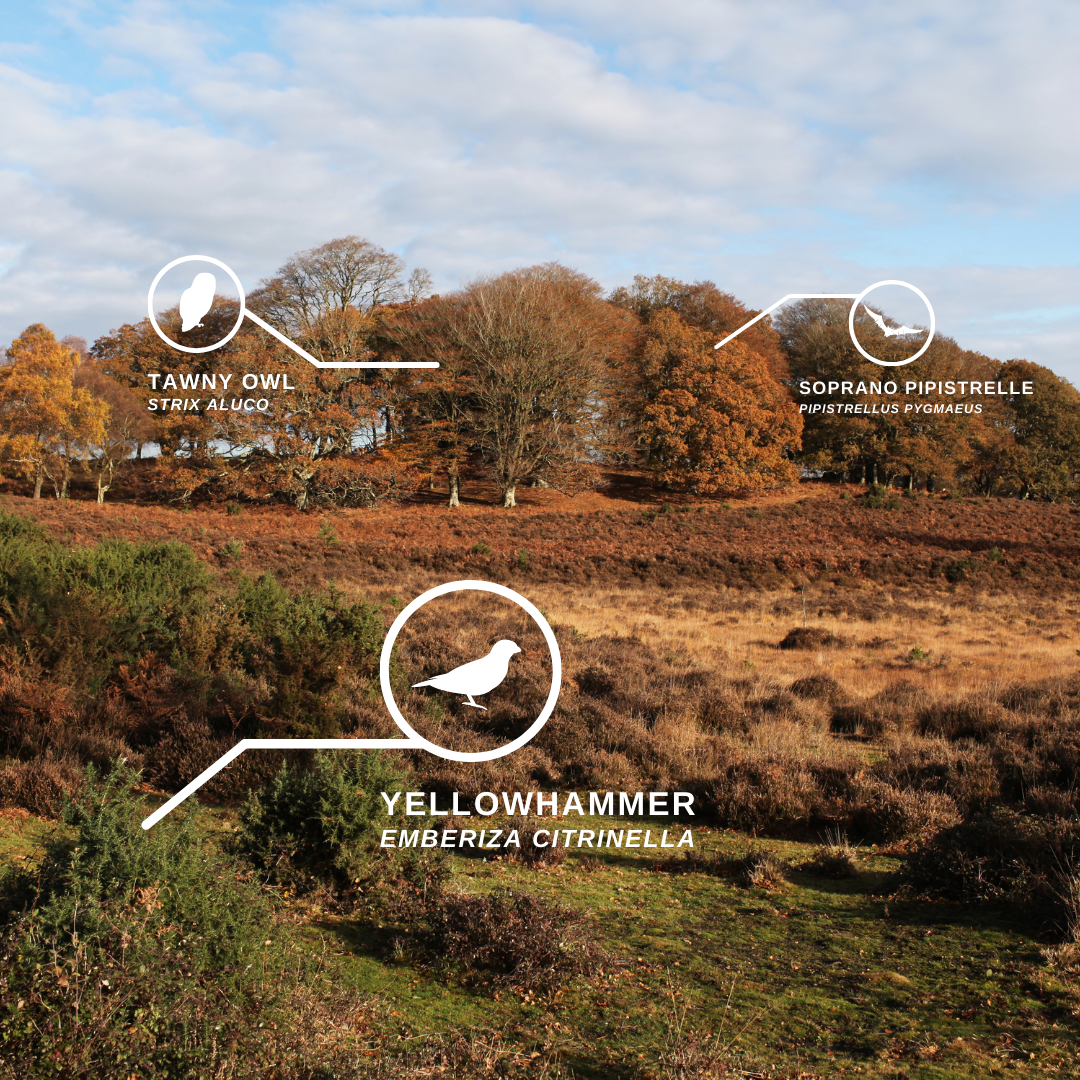At Carbon Rewild we are launching our new Bird and Bat Acoustic Monitoring Service.
This is a “ship and return” service. We post you a recording device and you set it up. Then after a month you post it back to us. We then analyse the data and send you a report describing all the bird and bat species identified.

Bird and Bat Acoustic Monitoring
Over the past year we have been busy creating the technology and logistics behind our first product offering: a new acoustic monitoring service.
This service will help individuals, organisations, and businesses to easily identify bird and bat species.
The whole process has been designed with the end user in mind as well as providing clear results describing which bird and bat species have been identified.
Once set up, the recording device passively records data over a one month period and can be left without additional assistance.
The device and the packaging have been designed to fit through a letter box to make delivery quicker, easier, and more convenient.
This acoustic monitoring service consists of four clear steps:
- Ship
- We ship you a device which will fit through your letterbox
- Record
- You follow the simple instructions and set up the device
- Return
- After one month you take down the device and post it back to us in its original packaging
- Report
- We analyse the data and send you a clear report detailing the species detected

Why Bird and Bats?
Biodiversity as a concept is difficult to measure. There is no unit of measurement and it can’t be reduced to a single number such as 0.5 kg or 5 pints.
So instead one approach is to count the number of species and how many times that species is identified. Generally speaking, the higher the number of individual species the richer the biodiversity.
This service focuses on acoustic and ultrasonic recording of birds and bats. There are a decent number of UK species to identify (over 250 bird species and 18 bat species [1,2,3]) and they themselves can be indicators of the general health of an ecosystem.
However, when it comes to biodiversity, not all bird and bats species are equal. Species of conservation and legal importance can be identified, so that proactive measures can be taken to protect and conserve the species.
Also the presence of a wide range of species indicates that there are other crucial elements of an ecosystem present such as suitable nesting habitats or a plentiful and diverse range of food.
The presence of certain species may also be an indication that there are lower levels of pollution or pesticide in the local environment [4]. Biodiversity is even an indicator of carbon sequestration and potentially a better indicator of sequestered carbon than counting the number of trees planted! [5,6,7]

Testing and Launch
Throughout 2021 and into early 2022 we have been testing the acoustic monitoring service. We detailed some of our earlier testing here and here.
The initial focus has been on ensuring that the device can clearly record bird and bat calls and that we can confidently identify different species from those calls.
There have been many different designs of the physical device, packaging, and shipping logistics but over the course of the year we were able to spiral in on a suitable design and process. The process was not always plain sailing but we now have a product ready for launch.
We can’t wait for you to try it. Let’s go find what animals are out there!
Carbon Rewild’s Mission
At Carbon Rewild our objective is to make biodiversity monitoring accessible to everyone.
By measuring biodiversity, we can be confident that we are taking the right steps to improve the ecosystems and environment around them.
And by making the technology scalable, easy-to-use, and affordable then more and more people can measure their impact and ensure they are acting in the right way to heal nature.
The more people who act the faster nature will heal.
Notes and References
- UK Bats, Bat Conservation Trust, March 2022
- Bird A-Z, RSPB, March 2022
- Over 600 species have ever been identified in the UK, however, many of these are accidental visits and are unlikely to be confidently identified
- Brühl CA and Zaller JG (2019) Biodiversity Decline as a Consequence of an Inappropriate Environmental Risk Assessment of Pesticides. Front. Environ. Sci. 7:177. doi: 10.3389/fenvs.2019.00177
- Buotte, P. C., Law, B. E., Ripple, W. J., and Berner, L. T.. 2020. Carbon sequestration and biodiversity co-benefits of preserving forests in the western United States. Ecological Applications 30( 2):e02039. 10.1002/eap.2039
- Yang, Y., Tilman, D., Furey, G. et al. Soil carbon sequestration accelerated by restoration of grassland biodiversity. Nat Commun 10, 718 (2019). https://doi.org/10.1038/s41467-019-08636-w
- Can We Reallt Solve The Climate Crisis By Planting Trees, The Guardian, August 2021

